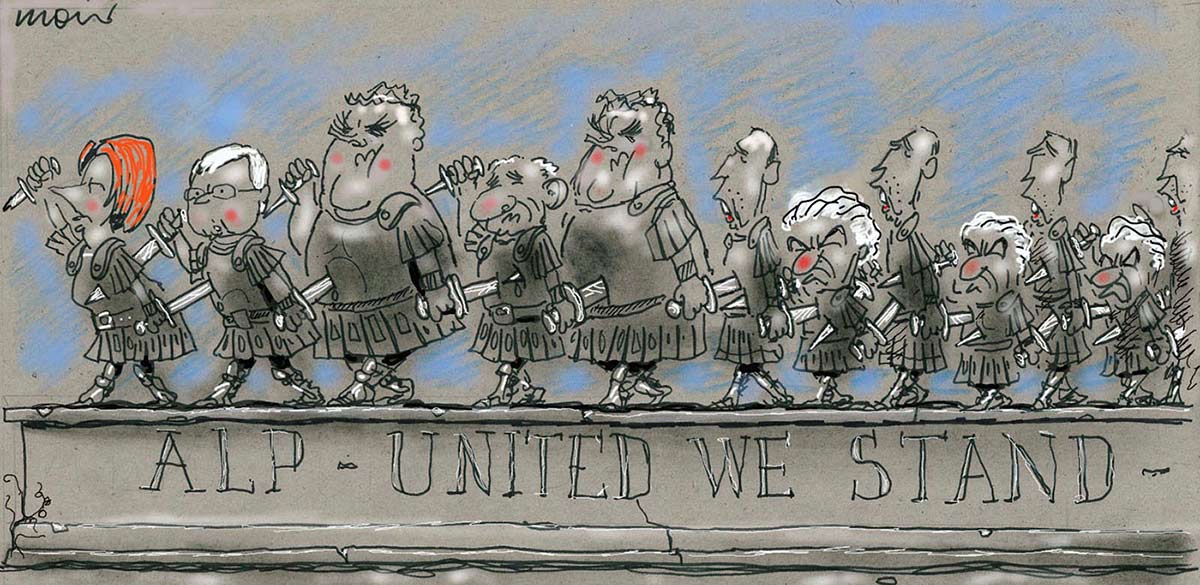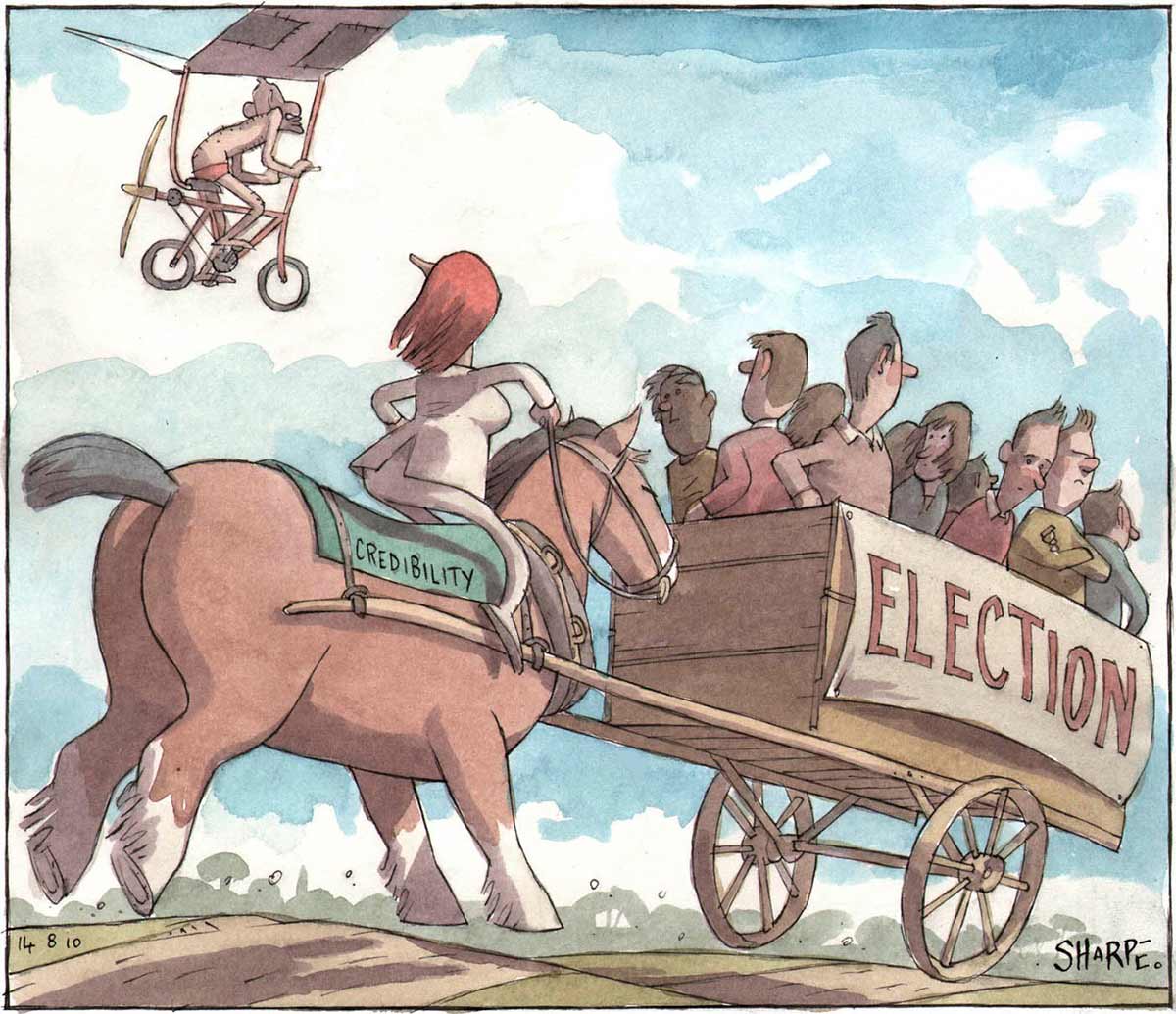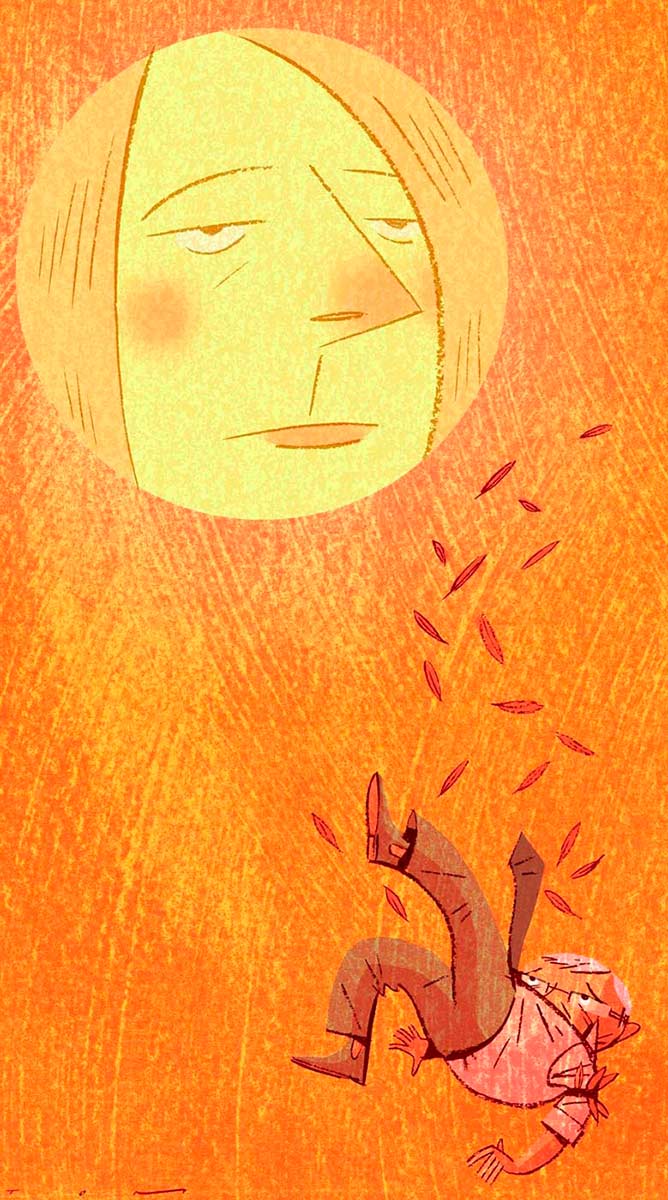
Chosen from the nation's newspapers and magazines, the political cartoons featured here provide an opportunity to reflect on the year that was.
While each cartoon was produced as part of the daily news cycle, taken together they give the year's events form and shape. The contours of our political landscape emerge from this visual archive, giving us an overview of what occurred.
The story they tell is one of betrayal, struggle and power. It is the story of a popular Prime Minister who, like the mythical figure of Icarus, flew too high only to suffer the humiliation of being deposed by his own party; of the new political warriors who fought one of the closest elections in Australian political history; and of a new Prime Minister who emerged, battered but undefeated, to lead a minority government.
When Kevin Rudd became Prime Minister in 2007, cartoonists struggled to find the right metaphor to depict him. His soaring popularity and symmetrical features proved resistant to caricature. Not so in 2010. Suddenly cartoonists found metaphors in abundance.
With his drawing of Rudd strapped to a skyrocket that has reached its zenith, Sean Leahy reminds us that what goes up must come down. Eric Löbbecke depicted the Prime Minister as Napoleon retreating from Moscow. And Tom Jellett's 'The fall of Icarudd' shows a politician who raised expectations too high only to be dragged back to earth by harsh political realities.
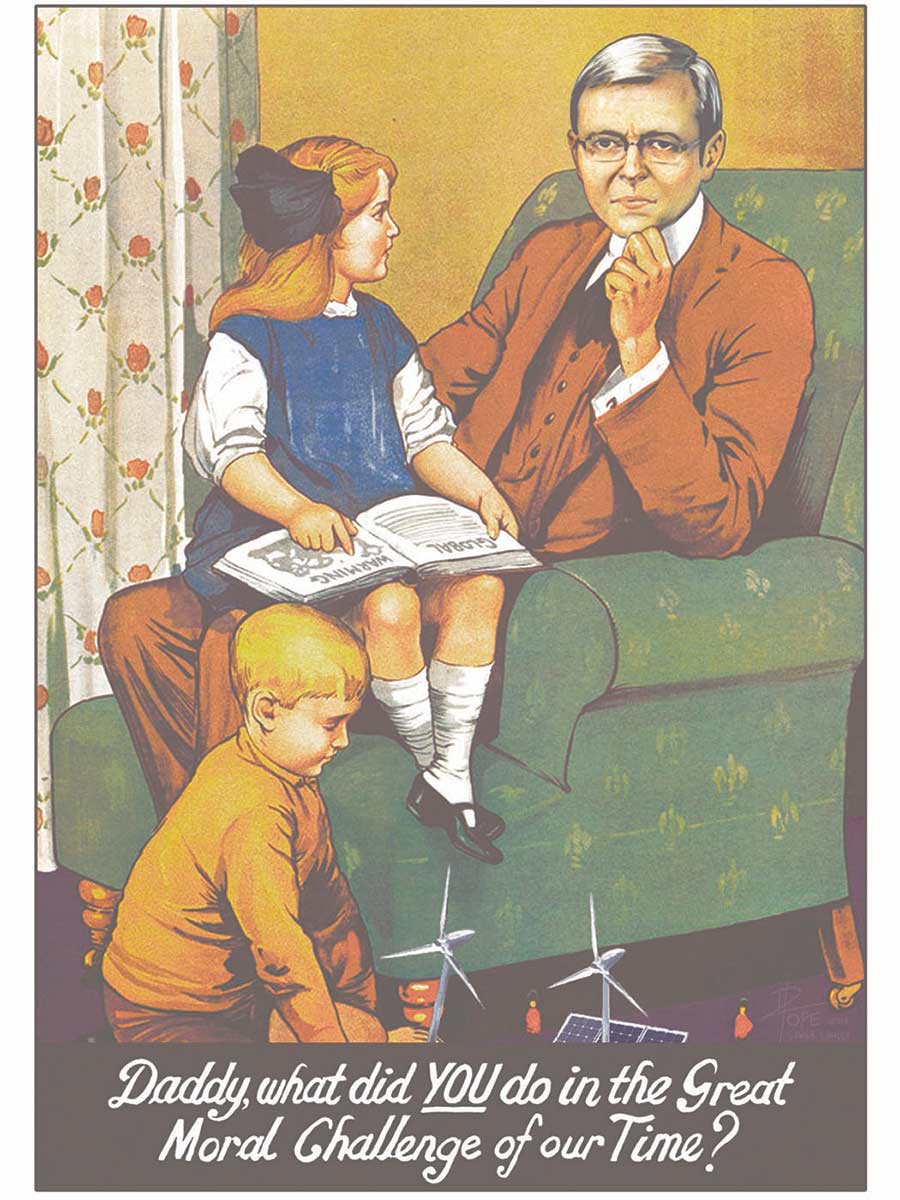
How had things changed so quickly for Rudd? At the beginning of 2010 few would have predicted his demise. Having disposed of two opposition leaders, he dominated the political landscape. And yet, even then, there were signs of the unravelling to come.
News of the failure of the United Nations Climate Change Conference in Copenhagen to reach a binding agreement for the reduction of carbon emissions, and the government's decision to shelve its proposed Emissions Trading Scheme disappointed many Labor supporters.
Canberra Times artist David Pope captured the paradox of a leader whose soaring rhetoric about the moral challenge of global warming was not backed up with resolute action. In Pope's deft reworking of a famous First World War British recruitment poster, Rudd is the pensive father seemingly at a loss for an answer to his daughter's question: 'Daddy, what did YOU do in the Great Moral Challenge of our Time?'
As the year went on, the government was buffeted by controversies. News of deaths associated with its Home Insulation Program saw Minister Peter Garrett come under constant attack. Allegations of waste plagued the Building the Education Revolution program.
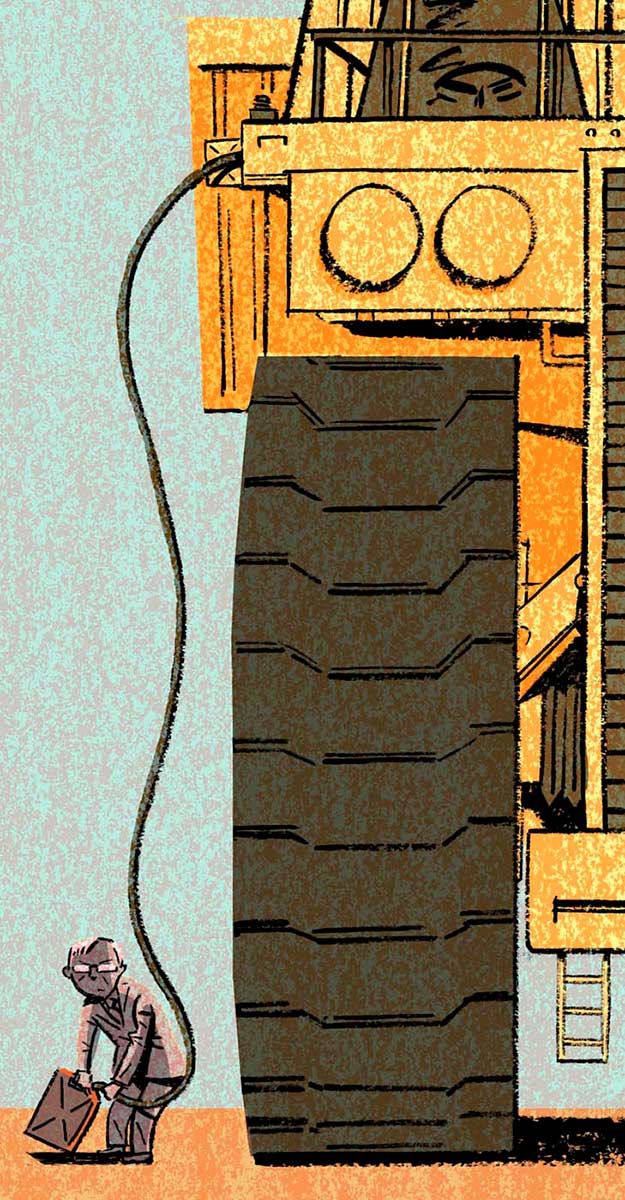
The government briefly regained the initiative with a major proposal for health care reform, but continued to face criticism on a range of fronts, including immigration policy, border control and the implementation of the National Assessment Program – Literacy and Numeracy tests in schools.
The death of Australian soldiers in Afghanistan also raised questions about our continuing involvement in that conflict. Each of these issues was faithfully recorded by cartoonists in works that conveyed the faltering image of Rudd Labor.
But Labor's biggest problem was to be its handling of the proposed Resource Super Profits Tax on mining projects. A major recommendation of the Henry Tax Review, the proposed tax was vehemently opposed by the mining industry. Sensing a weakness in the government's position, the Leader of the Opposition, Tony Abbott, branded it a 'big new tax' that would threaten Australia's prosperity.
Tom Jellett's cartoon showing Rudd siphoning off a small amount of petrol from a huge mining truck reflects the importance of the mining industry to Australia's economy, while also hinting at the size and scale of the vested interests opposed to the new tax.
The event on which the year hinged was the election of Julia Gillard by the Labor caucus as leader of the Australian Labor Party on 24 June 2010, making her Australia's first female Prime Minister. Cathy Wilcox neatly summarised the gender politics of Gillard's rise to power by noting that she had not so much broken the glass ceiling as 'waded through the testosterone quagmire'.
Alan Moir reminded us of the long history of removing failing leaders with a wonderful cartoon depicting an ancient frieze of senior Labor politicians dressed in imperial Roman costume, stabbing each other in the back. Beneath the frieze the motto reads, 'United we stand'.
The dumping of a sitting Prime Minister, however, was unusual. In just 24 hours, the nation's political landscape had shifted dramatically. Not since Paul Keating's challenge to Bob Hawke in 1991 had an incumbent Prime Minister been unseated by his own party.
But while Keating's challenge to Hawke had long been expected, Gillard's ascension to power was watched with amazement. Dan Boreman's nightmarish portrayal of Rudd as the central figure in Edvard Munch's The Scream reflects the disquiet many felt over what had occurred.
And still the surprises kept coming. Just three weeks after becoming Prime Minister, Gillard announced an election for 21 August 2010. As the campaign unfolded, Tony Abbott proved to be a disciplined opponent, continually attacking Labor over government waste, tax, debt reduction and asylum-seekers. His reputation as a fitness fanatic saw him depicted by cartoonists variously as a boxer, a swimmer and a cyclist.
The Opposition Leader's red speedos, or 'budgie-smugglers', seemed everywhere, the cartoonists' new shorthand for the man. As for Gillard, she continued to be dogged by images of her former leader, and questions about why it had been necessary to remove him.
The result of the election was a hung parliament, the first in over 70 years. Cartoonists were quick to master the faces of Bob Katter, Tony Windsor and Rob Oakeshott, the three rural independents who held the balance of power.
After two weeks of intensive negotiations focusing on issues such as parliamentary reform, regional development and broadband, Gillard emerged at the head of a minority Labor government. She had narrowly avoided becoming one of the shortest serving Prime Ministers in Australian history.
Viewed together, the cartoons show that 2010 was a remarkable year in Australian politics. The sudden demise of Rudd, the swift rise of Gillard and the near-success of Abbott surprised many. Much to our delight, the nation's cartoonists have been there throughout the year, recording the contours of this fascinating story.
Guy Hansen
Senior Curator
Accessibility
Cartoons are a highly visual medium and to improve website accessibility we have created alternative or alt text for each of the cartoons in the online version of Behind the Lines 2010.
You may also like
